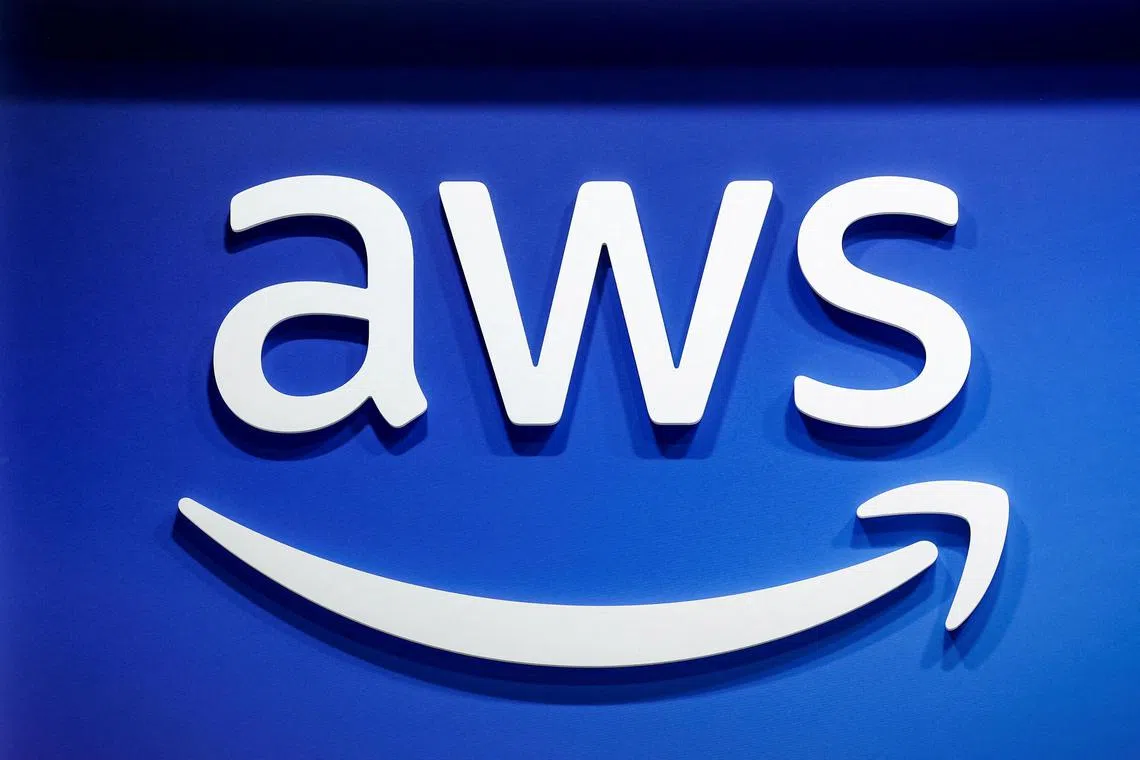Amazon cloud computing results fail to impress; shares dive
Sign up now: Get ST's newsletters delivered to your inbox

Amazon Web Services reported a 17.5 per cent increase in revenue to US$30.9 billion (S$40.1 billion), edging past expectations of US$30.77 billion.
PHOTO: REUTERS
Follow topic:
BENGALURU - Amazon.com on July 31 forecast third-quarter sales above market estimates, but failed to live up to lofty expectations for its Amazon Web Services (AWS) cloud computing unit after rivals handily beat Wall Street forecasts.
Shares plunged by more than 7 per cent in after-hours trading.
Both Google parent Alphabet and Microsoft posted big cloud computing revenue gains in July.
AWS profit margins also contracted. Amazon said they were 32.9 per cent in the second quarter, down from 39.5 per cent in 2025’s first quarter and 35.5 per cent a year ago. The second-quarter margin results were at their lowest level since the final quarter of 2023.
AWS represents a small part of Amazon’s total revenue, but it is a key driver of profits, typically accounting for about 60 per cent of overall operating income.
AWS reported a 17.5 per cent increase in revenue to US$30.9 billion (S$40.1 billion), edging past expectations of US$30.77 billion. By comparison, sales for Microsoft’s Azure rose 39 per cent and Google Cloud gained 32 per cent.
Amazon expects total net sales to be between US$174 billion and US$179.5 billion in the third quarter, compared with analysts’ average estimate of US$173.08 billion, according to data compiled by LSEG. The range for operating income in the current quarter was also light. Amazon forecast between US$15.5 billion and US$20.5 billion, compared with expectations of US$19.45 billion.
Both Microsoft and Alphabet cited massive demand for their cloud computing services to boost their already huge capital spending, but also noted they still faced capacity constraints that limited their ability to meet demand. While Amazon has poured billions of dollars into AI infrastructure, analysts have said the lack of a strong AI model from AWS is causing concerns that the company could be trailing rivals in AI development.
The largest tech companies have been boosting capital expenditure to add more data centre capacity, particularly for AI software deployment and development. Amazon said it expected second-half spending to be roughly the same as its second quarter total of US$31.4 billion, suggesting it would spend around US$118 billion for the full year. Analysts had projected about US$100 billion.
On July 30, Microsoft said it would spend a record US$30 billion in the current quarter. Google parent Alphabet raised its spending forecast by US$10 billion to US$85 billion for the year.
Amazon posted online store sales of US$61.5 billion, an 11 per cent gain. Advertising sales, a fast-growing segment for Amazon, were up 23 per cent to US$15.7 billion.
Investors have been watching Amazon’s e-commerce unit for any signs that tariff-related uncertainty has dashed consumer confidence. US data showed consumer spending rose moderately in June.
Chief executive Andy Jassy, in a call with analysts, addressed concerns about the impact of tariffs on Amazon’s core retail business.
“Through the first half of the year, we haven’t yet seen diminishing demand nor prices meaningfully appreciating,” he said on a call with analysts. “We also have such diversity of sellers in our marketplace, over two million sellers in total, with differing strategies of whether to pass on higher costs to consumers.”
He added: “We just don’t know what’s going to happen moving forward. It’s hard to know where the tariffs are going to settle, particularly in China.”
Analysts had said that Amazon’s focus on low prices, quick delivery and its many product categories helped cement its position as the No. 1 e-commerce retailer for US consumers, giving it an edge over rivals.
Amazon has said it was pushing suppliers to pull forward inventories to ensure supply and keep prices as low as possible. Still, prices for goods made in China and sold on Amazon.com have been rising faster than overall inflation, Reuters reported in June.
Amazon has been trimming jobs, including at its AWS, books, devices and podcasting units. Headcount fell by 14,000 workers from 2025’s first quarter, bringing the total to 1.46 million, the first decline since the beginning of 2024. REUTERS

